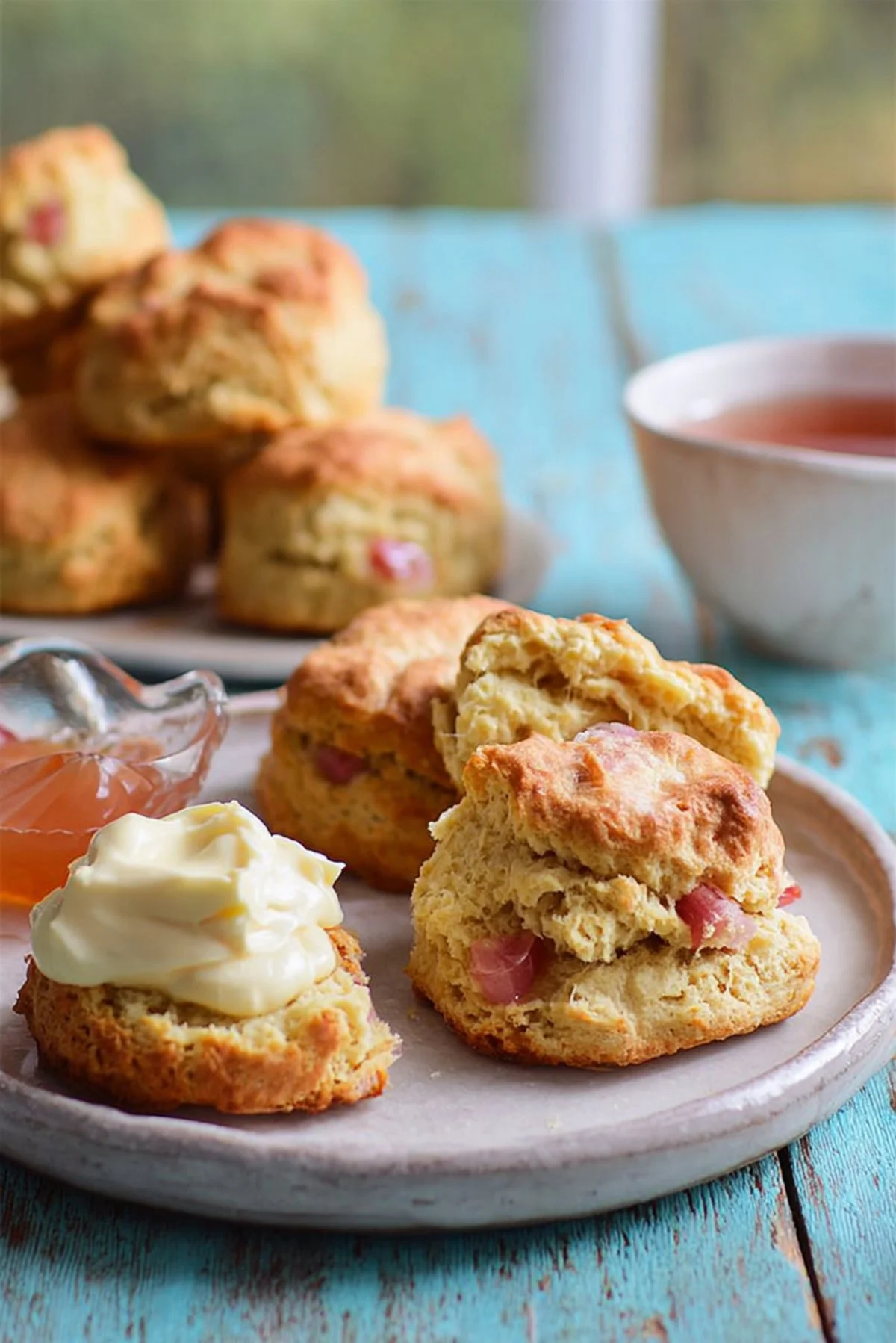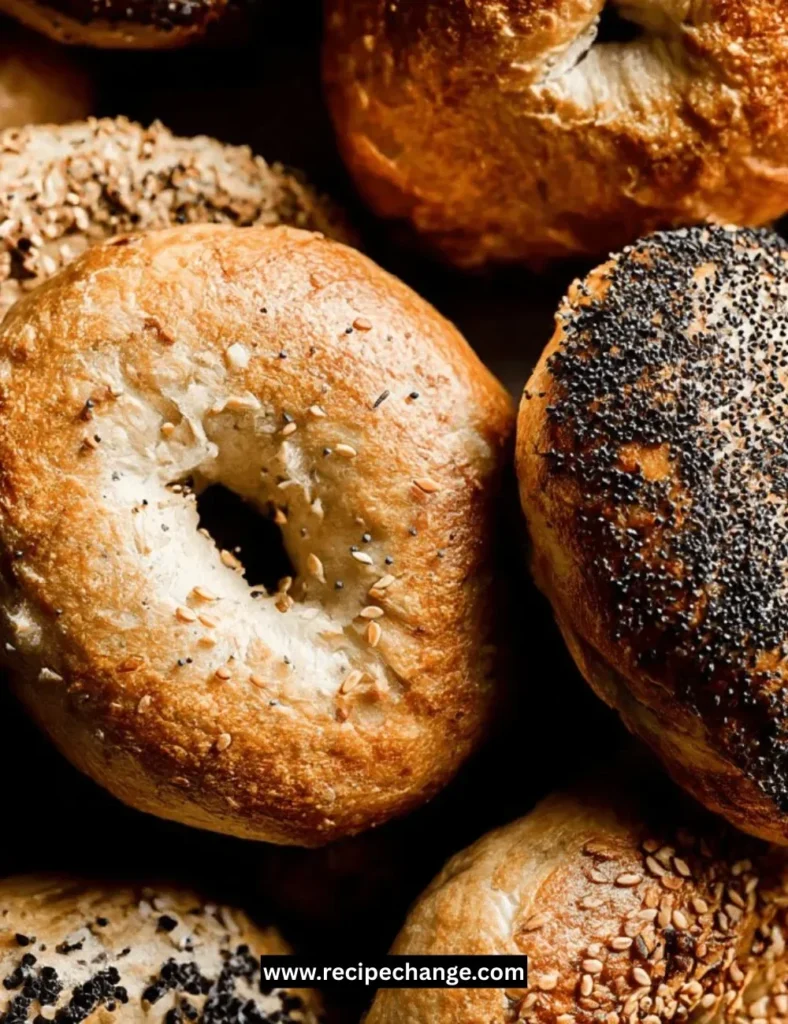Perfectly Homemade English Muffins: A Cozy Breakfast Delight
Imagine waking up to the warm, inviting aroma of freshly baked English muffins wafting through your home. As you pull them from the oven, their golden-brown tops create an irresistible crunch that gives way to a soft, fluffy interior. When you slice these delectable rounds open, the steam escapes, and you can practically taste the anticipation. Slather them with butter or pair them with your favorite jam, and you’ll discover a delightful symphony of flavors—slightly nutty from whole wheat, with a touch of sweetness to balance the slight tang of fermentation. English muffins have a unique ability to transform ordinary moments into extraordinary memories, making them the perfect centerpiece for cozy mornings, family gatherings, or quick meals on busy days.
Recipe Information
- Prep Time: 1 hour (plus rising time)
- Cook Time: 20 minutes
- Total Time: 1 hour 20 minutes (plus rising time)
- Servings: 6 muffins
- Difficulty Level: Easy
- Nutrition Information (per muffin):
- Calories: 170
- Protein: 6g
- Carbohydrates: 30g
- Fat: 3g
- Fiber: 3g
- Sugar: 2g
(Nutritional information is based on standardized ingredients and may vary; please consult trusted health sources for dietary needs.)
Why Make This Recipe
These English muffins are not just any breakfast item—they embody comfort, simplicity, and versatility. They’re ideal for leisurely weekends with family, quick snacks to grab on busy mornings, or a delightful addition to brunch gatherings. The aroma of these freshly baked muffins invites everyone to the breakfast table, while the slightly chewy texture and warm, soft center promise to please even the pickiest of eaters. Plus, they can easily be customized with toppings or fillings to suit your personal palate.
How to Make English Muffins
Ingredients:
- 2 cups all-purpose flour
- 1 cup whole wheat flour
- 1 cup milk (warm)
- 2 tablespoons sugar
- 1 tablespoon active dry yeast
- 1 teaspoon salt
- 2 tablespoons butter (melted)
- Cornmeal (for sprinkling)
Steps:
- In a small saucepan, heat the milk gently until warm. Remove from heat and add the sugar and yeast. Allow the mixture to sit for about 5 minutes, until it becomes frothy.
- In a large mixing bowl, combine the all-purpose flour, whole wheat flour, and salt.
- Pour the activated yeast mixture into the flour mixture along with melted butter. Mix until a cohesive dough begins to form.
- Turn the dough onto a floured surface and knead for about 5-10 minutes until smooth and elastic.
- Place the dough in a greased bowl, cover it with a clean cloth, and let it rise in a warm place until it has doubled in size (approximately 1 hour).
- After the dough has risen, gently punch it down and roll it out to about 1/2 inch thick. Use a round cutter to cut out muffins and place them on a baking sheet sprinkled with cornmeal.
- Cover the muffins with a cloth again and let them rise for another 30 minutes.
- Preheat a griddle or skillet over medium-low heat. Carefully transfer the muffins to the hot surface; cook each side for about 7-10 minutes until they’re golden brown and have a nice crust.
- Cool the muffins on a wire rack before slicing and toasting.
Baking Tips: Avoid overmixing to keep the texture light and airy. When cooking, check for doneness by tapping the bottom of the muffin; a hollow sound indicates they’re ready.
How to Serve
These English muffins are incredibly versatile! Serve them plain for a simple breakfast, generously spread with butter, or alongside a hot cup of coffee or tea. For a delightful twist, toast them and top with honey or your favorite jam. Don’t forget they make incredible base layers for eggs Benedict or can be transformed into mini sandwiches for lunch.
How to Store
After enjoying your fresh English muffins, store any leftovers in an airtight container at room temperature for 3 days. For longer storage, freeze them for up to 3 months. When ready to eat, simply toast from frozen!
Expert Tips
- For best results, use a kitchen thermometer to ensure the milk is warm (around 110°F) but not hot, as excessive heat can kill the yeast.
- Adjust the cooking time based on your stovetop’s heat; ensure muffins are cooked thoroughly to avoid a doughy texture inside.
Delicious Variations
- Vegan Version: Substitute milk with plant-based milk (such as almond or oat milk) and use coconut oil in place of butter.
- Cinnamon Swirl: Add 1-2 teaspoons of ground cinnamon to the flour mixture, and swirl in some cinnamon sugar before rolling the dough.
- Gluten-Free Alternative: Use a 1:1 gluten-free flour blend in place of all-purpose and whole wheat flour.
Frequently Asked Questions
-
Can I use instant yeast instead of active dry yeast?
- Absolutely, use half the amount of instant yeast, and there’s no need to let it activate before mixing into the flour.
-
What’s the best way to check if muffins are cooked through?
- Look for a golden-brown color on both sides and tap the bottom; a hollow sound indicates doneness.
-
Can I freeze the dough before cooking?
- Yes! Freeze the formed dough after the first rise. When ready to use, let it thaw in the fridge overnight before proceeding to the second rise and cooking steps.
-
How can I change up the flavors?
- Try incorporating dried herbs, cheese, or even diced vegetables for savory muffins.
-
What do I do with leftover muffins?
- They can easily be made into bread pudding, used for croutons in salads, or simply toasted and enjoyed with breakfast spreads.
Conclusion
Baking your own English muffins not only fills your home with a comforting aroma but also offers a delicious and gratifying experience. Whether slathered with butter and jam or enjoyed as a sandwich base, these homemade delights are sure to impress. Try the recipe today and share your variations or experiences in the comments below! Happy baking!




